Ghee or clarified makkhan, which is made from milk, has an important role in our daily life. It is considered as sacred and is offered to various deities during worship and rituals. Ghee is used for nourishment and healing in Ayurveda and are common in cooking purposes.
Most of the people use ghee for their daily purpose without knowing the difference between the Cow ghee, Buffalo Ghee and Jersey Cow Ghee. It should be compulsory to know about the advantages and disadvantage of these ghee for our healthy life, before we actually chose what should we consume.
Desi Cow Ghee vs Buffalo Ghee
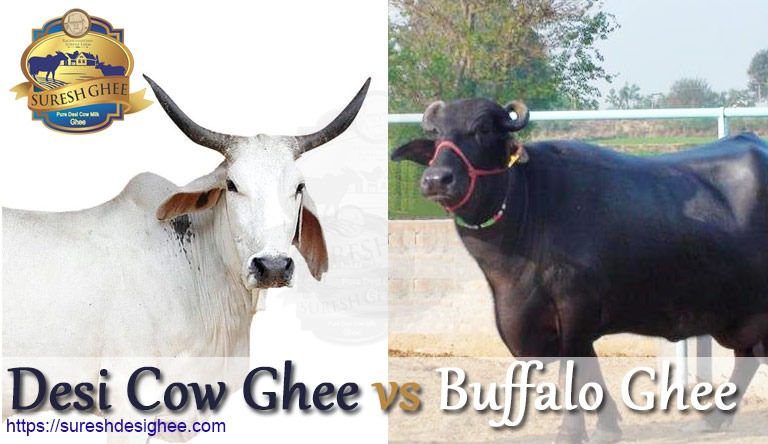
Desi cows are breeds of cow common to India (and Africa) which produce milk rich in A2 proteins, which are purportedly more digestible for humans. Pure Cow ghee is yellowish cream in color whereas buffalo ghee is white. Cow’s milk is better than buffalo’s milk as it lighter and has less phosphorus which makes the absorption of calcium easy. The same carotenoid is also found in veggies like carrot. People like their table butter yellowish, thus dairies use the same carotenoid or annatto (another natural coloring pigment) for imparting the same. Buffalo ghee is found in few countries like India, Pakistan etc whereas Cow ghee is found all over the world.
Difference Between Cow Ghee Vs Buffalo Ghee
- When compared to buffalo ghee, Cow ghee is good for children to reduce obesity and in protecting from many diseases like cardiovascular, thyroid etc….
- Cow ghee contains lots of minerals, vitamins, calcium and protein whereas buffalo ghee is rich in calcium, magnesium and phosphorus.
- A cow gives less milk as compared to buffalo.
- Cow milk is more slimy than buffalo milk.
- Ghee made from milk of desi cow is yellow, light in feel, tastes excellent and best for health.
- Cow ghee is much better than buffalo ghee. Whereas buffalo ghee is heavier than cow ghee. Desi Ghee for Athlete is a consistent energy source in medium chain fatty acids, which are absorbed directly by the liver (like carbs) and burned as energy.https://www.youtube.com/watch?v=q-_mq69iSlE
Product Description and Chemical Composition of Ghee (Cow Ghee Vs Buffalo Ghee)
Ghee could be in liquid, semisolid and some time in the solid state based on the storage temperature. Ghee made from buffalo milk is whitish with a greenish tinge and that of cow milk is a golden yellow color. It is usually prepared from cow milk, buffalo milk or mixed milk.
Composition: Ghee is a complex lipid of glycerides (majorly triglycerides), free fatty acids, phospholipids, sterols, sterol esters, fat soluble vitamins, carbonyls, hydrocarbons, carotenoids, (only in ghee derived from cow milk). Its detailed chemical composition is given below.
| Constituents | Cow milk ghee | Buffalo milk ghee |
| Fat (%) | 99 – 99.5 | 99 – 99.5 |
| Moisture (%) | <0.5 | <0.5 |
| Carotene(mg/g) | 3.2-7.4 | – |
| Vitamin A(IU/g) | 19-34 | 17-38 |
| Cholesterol (mg/100g) | 302 – 362 | 209 – 312 |
| Tocopherol(mg/g) | 26 – 48 | 18 – 31 |
| Free fatty acid (%) | 2.8 | 2.8 |
Milk fat contains at least 500 fatty acids and fatty acid derivatives with 4 – 20 or more carbon atoms in their chain. The fatty acid may be saturated or unsaturated and usually contains an even number of carbon atoms. Composition of fatty acid also varies between buffalo milk fat and cow milk fat. Following table shows the detailed composition of buffalo milk and cow milk fatty acid composition.

| Fatty Acid (%) | Buffalo milk fat | Cow milk fat |
| Butyric | 4.4 | 3.2 |
| Caproic | 1.5 | 2.1 |
| Capric | 1.3 | 2.6 |
| Lauric | 1.8 | 2.8 |
| Myristic | 10.8 | 11.9 |
| Palmitic | 33.1 | 30.6 |
| Stearic | 12.0 | 10.1 |
| Oleic | 27.2 | 27.4 |
| Linoleic | 1.5 | 1.5 |
| Linolenic | 0.5 | 0.6 |


Buy Pure Desi Cow Ghee Online : Order Now. Free Shipping
Compare Cow and Buffalo Ghee
Currently, India is the world’s largest producer of buffalo and cow milk and also the biggest consumer of ghee. Ghee or clarified butter, which is made from milk, has a big role in our daily life.
Improve digestive system
A spoon of desi ghee along with a glass of warm milk before going to bed helps to improve the digestive system. Intake of Cow ghee aid in strengthening the digestive system than buffalo ghee.
Quantity of Ghee
Another difference between cow ghee and buffalo ghee can be seen in its quantity. The amount of ghee extracted from cream of cow milk is lesser than that of buffalo milk.
Healthy Diet
Ghee is a part of our healthy diet. But lots of saturated fat and cholesterol in ghee can affect our health. Cow ghee has low fat and high cholesterol when compare with Buffalo Ghee.
Why the desi cow ghee is costlier than normal ghee?
Desi Cow Ghee Vs Jersey Cow Ghee
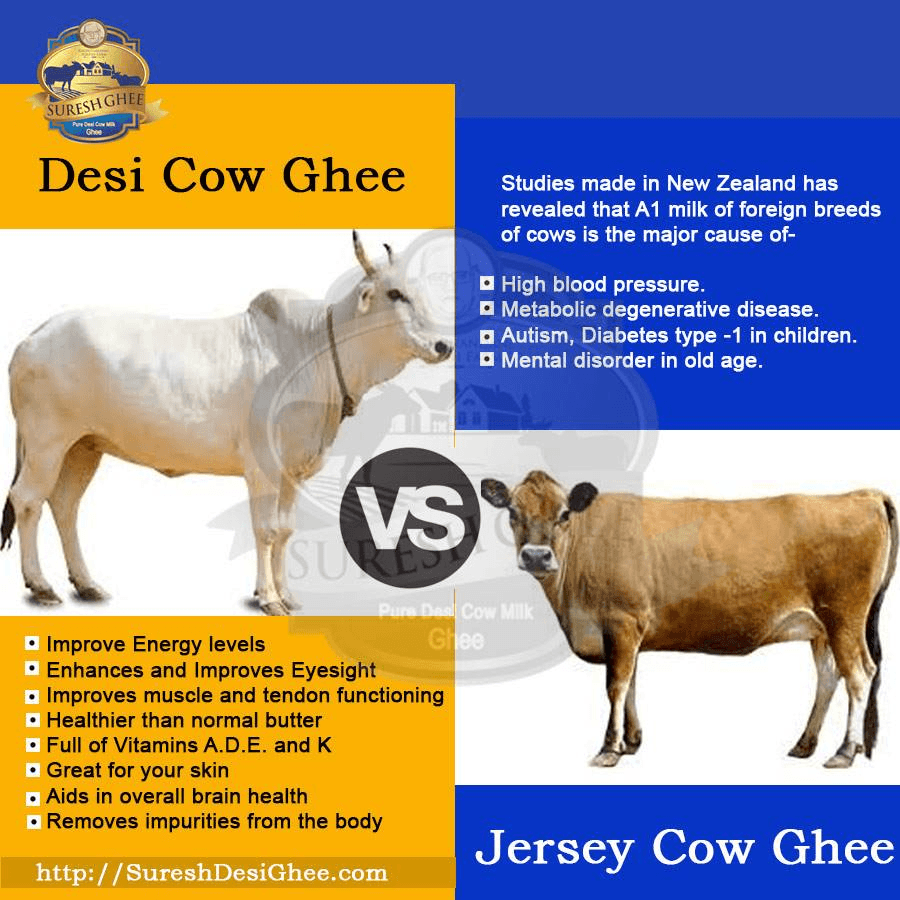
Desi Cow Ghee is clarified butter. Butter is heated causing the solids to separate by density. The lighter water and solids are skimmed from the top with the remainder being the clarified butter. Desi cows are breeds of cow common to India which produce milk rich in A2 proteins, which are purportedly more digestible for humans.
Protein in Jersey cow milk is A1. Now it is well-established fact that A1 milk is not good to consume for humans. On one side, Jersey cow gives ample amount of milk so nutritional density in milk is lower than Desi Cow.
Now the question is – Where can I buy desi cow ghee? Buy ghee online at our online store. Visit our website https://sureshdesighee.com/ to know more.
Why is the desi cow ghee beneficial for humans ?
It’s a myth that modern generation in India does not like ghee, rather health freaks are quite aware that in today’s hectic lifestyle regular and moderate consumption of cow ghee works like a natural medicine.
Indian breed cow’s ghee is believed to be the best for human consumption. It is full of nutritive qualities and ideal diet for heart patients who suffer due to excessive cholesterol in their blood. Its regular consumption increase physical and mental strength, keeps the body healthy and increases the potency of the body. It is not only nutritive, but also helps to remove impurities from the body. It also contains significant levels of vitamins A, E, and D. Although some people think of fats as unhealthy elements of your diet, the body also needs fat to function. Omega-3s (monounsaturated fats) are healthy forms of fat which may be found in ghee, in addition to other fatty acids like conjugated linoleic acid and butyric acid, both of which have positive health benefits in the body.
The Health Benefits Of Desi Cow Ghee For Humans
- Cow ghee is an excellent natural moisturizer and lubricator, which works well for maintaining the flexibility of bone joints. Its vitamin and antioxidant dose is good for skin care and it anti-aging effect, etc.
- Moderate consumption of desi cow ghee is solicited because it keeps gut health under control by supplying natural butyrate, which is a natural solution of constipation and Irritable bowel syndrome (IBS) problem, which has become quite common disease for modern generation due to sedentary lifestyle.
- Consumption of ghee with rice, roti reduces glycemic index or glycaemic index (GI) level, which is good for people suffering from diabetes or obesity.
- Desi cow provides good fat and this is the reason it helps in keeping good heart health.
- Moderate consumption of cow ghee helps in controlling calorie intake as it works as a filler food and thus helps in pursuing weight management programs with faster result. Today’s modern generation is quite conscious about their figure management; hence ghee will work for them as a natural way to be in shape with exercise and healthy lifestyle.
Difference Between Desi Cow And Jersey Cow
Physical Appearance
- Indian cow have hump/dewlap. An Indian cow can reach any part of its body with tongue and tail. Jersey doesn’t have dewlap/hump and not flexible enough.
- Indian desi cow has loose skin. Can get relief of flies by shaking particular portion of skin. Neither humans nor Jersey can do it.
- The above two points make Indian cows more disease resistant.
Medicinal Ghee
- Traditionally prepared Indian cow ghee works wonders in human health. One of the popular ones is Nasal drops.
- Jersey Ghee. I am yet to hear its medicinal value.
Nutrition
- Humans can survive only on milk and water as long period for white collar job professionals provided they overcome mental carving of other food. It provides complete nutrition (proteins/fats/carbohydrates/macro and micro minerals). There are living examples. A2 protein is one of the many differences.
- With jersey cow milk, its not possible as it has some limitation described above.
Energy absorption: Sun is the critical energy source for all living organisms. Its nearest equator where we see human areas with densely populated than the rest of the distance from the equator.
- Indian cows has the capacity to absorb sun energy through hump (Suryaketu nadi) and pass it to its milk, urine, dung
- Jersey prefers to stay away from sun
Different Species: Two different species cannot have quality of enzymes and equal quantity in its milk.
- Indian desi cow is from Bos Indicus family.
- Jersey cow is from Bos Taurus family.

Benefits Of Desi Cow Milk
The nutritional value of milk of Indian cows (if not fed with grass; polluted with chemical fertilizer and plastic); in the other hand; is the highest along with many curative properties against many diseases.
The milk of Indian cows contain an amino acid PROLINE which is strongly bonded to another amino acid ISOLEUCINE. Such as milk, called as A2 milk has the capability to fight against diseases and disorders of human body like obesity, joint pain, asthma, mental problems etc. A2 milk contains has high levels of Omega 3 that cleans the cholesterol deposits of blood vessels. Cerebrosides present in A2 milk increases brain power. Strontium of A2 milk enhances the body’s Immunity and protects it from harmful radiation.
Jersey Cow A1 Milk
Protein found in A1 milk produced by Jersey is not absorbed well by the human body and hence, it may trigger adverse health effects.
Milk from breeds of jersey cows that originated in northern Europe is generally high in A1 beta-casein. A1 milk comes from breeds like the Holstein, Ayrshire ,Friesian and British Shorthorn.
Disadvantage Of Jersey Cow Milk
Observational studies link consumption of A1 milk with high-risk of coronary heart diseases. There are significant differences in digestive symptoms between milks containing A1 and A2-beta casein. Irritable bowel syndrome or a weak intestine can be caused by unwanted proteins in the human body. Additionally, studies in rodents indicate that A1 beta-casein induces inflammatory response in intestine and hence cause digestion problems.
- Its milk comes under the category A1 which is very unhealthy and poisonous
- Its milk contains BCM 7 element which causes lots of many diseases like heart diseases, cancer, etc.
- Metabolic degenerative disease.
- High blood pressure.
- Mental disorder in old age.
Introduction of Ghee
Nowadays, about 28% of the total milk production is utilized for the manufacture of about one million ton of ghee per annum. Ghee is a product of tradition with an established market prepared at the household level, also at organized dairy plants. Ghee manufacture has great significance and relevance to Indian masses and the dairy industry there is sufficient recorded evidence to prove that the manufacture of ghee originated in India and it has been used extensively for dietary and religious purposes since Vedic times (3000-2000 B.C).
A necessity for Production of Ghee
India is a tropical country with wider variations in ambient temperature from region to region and from season to season. It is very difficult to provide a cold chain to protect perishable products like milk and butter for a longer time, also this exercise involves additional investment and expenditure. Thus, a simple, convenient and affordable process to preserve milk fat would favor the milk producers and processors to a greater extent.
Whenever milk released with producer, they experience great difficulty to preserve it, with available resources with them conversion of ghee to malai and then from malai to ghee was found to be the only affordable and convenient way to preserve milk fat at ambient temperature at the household level.
- Ghee is a very popular product since ancient times and has greater demand during the festival and other ceremonial functions where the use of ghee in food has been considered to delicacy due to its pleasing flavor and aroma.
- Ghee has a market demand of around one million ton per annum in India, to meet this huge demand and also the involvement of simple technology to produce ghee attracts the milk processor to have ghee making plant of variable capacity.
- The best ways to salvage substandard and returned market milk at a commercial dairy level is a separation of fat from these and convert this fat to ghee.
FAQ on Jersey Cow Ghee and Desi Cow Ghee
What is the difference between A1 and A2 cow Milk ?
The ultimate differentiation between A1 and A2 milk leads to the structure of the milk protein casein. Such protein is present in two forms as A1 beta casein or A2 beta casein. Studies have shown that A1 milk isn’t as beneficial for health as A2 milk.
Are the cows different for different ghee production ?
In order to produce ghee, A1 and A2 milk is obtained from different breeds of cows. Such a difference is in the genetics of the cow that results in the difference in the beta casein structure of the milk it produces. Although genes can have several mutated forms, in this case, there are the A1 and A2 type proteins. According to wide research, scientists have found that cows that produce only A2 milk are rather safe and easy to digest.
Is there any difficulty absorbing ghee produced from A1 milk ?
BCM-7, a peptide found in A1 milk tends to disagree with the human gut. It could be because BCM-7 triggers certain receptors in our gut system. BCM-7 combined with such specific receptors, resulting in irritation and swelling in the gut leading to symptoms of lactose intolerance. Comparatively, when ghee obtained from A2 milk is digested and broken down by the several enzymes present in our digestive system, no such harmful component is formed, leading to the no intolerance factor.
How does BCM-7 in A1 ghee affect the human body ?
At the time when the A1 structure of beta casein is broken down into the gut, something called a peptide known as BCM-7 is produced. As far as we can tell, the body doesn’t settle smoothly with BMC-7 as much. Rather, the human body has shown to have quite an adverse reaction to BCM-7 which leads to reported symptoms that include gastric disturbances of several intensities.
Desi Cow Ghee Benefits
Pure Desi Ghee Price Online: 1 kg Ghee Price is Rs 2400/-
Health Benefits Of Drinking Milk With Ghee At Night
Desi Cow Ghee For Hair Growth, Hair Fall Treatment & Regrowth Benefits
Benefits Of Applying Desi Ghee For Face Overnight
Best Ghee For Babies, Infants Skin And Ghee Massage For Babies

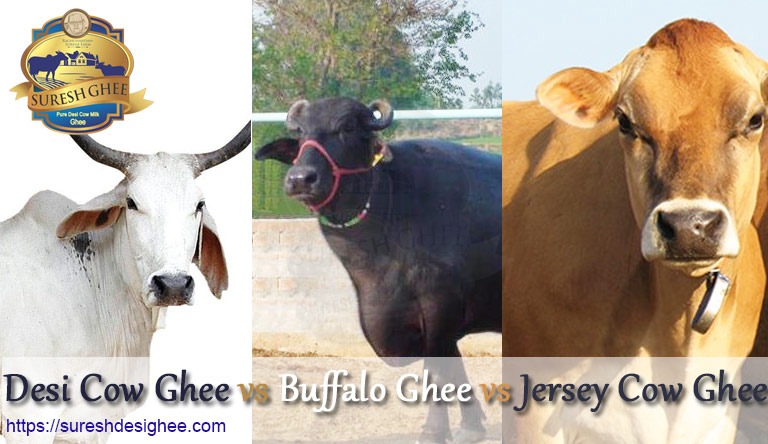
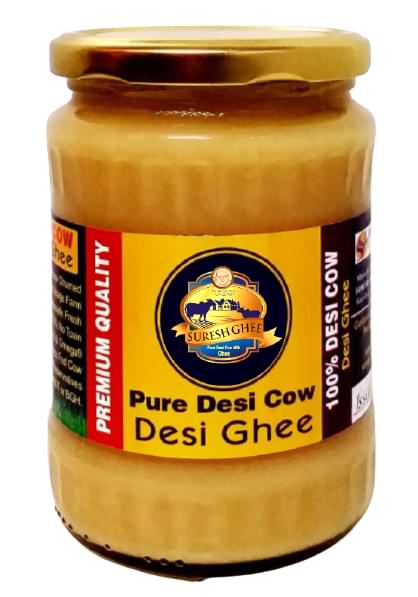
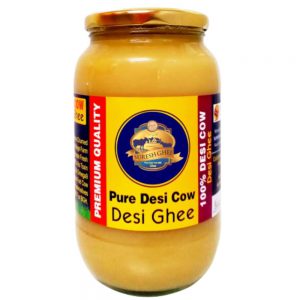
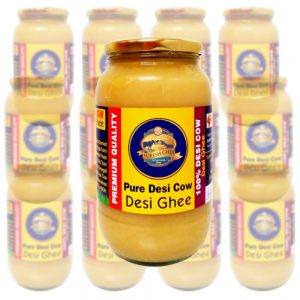
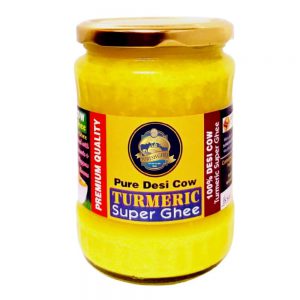
 WhatsApp us
WhatsApp us 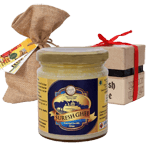
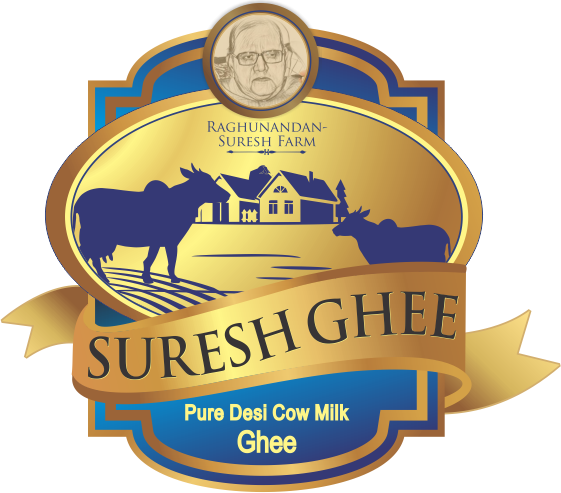
Naveen m...